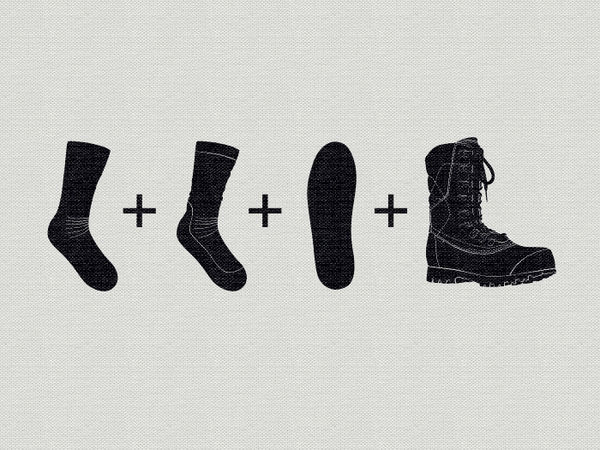Choosing the Right Sock
Our boots are constructed according to the shell principle, which means that they are like an outer garment for your feet. Hence, they should be supplemented with two pairs of socks, according to the shell principle. And an insole. Everything, of course, with a large content of wool for the most comfort and function.

Our boots are constructed according to the shell principle, which means that they are like an outer garment for your feet. Hence, they should be supplemented with two pairs of socks, according to the shell principle. And an insole. Everything, of course, with a large content of wool for the most comfort and function.
Our socks are not just a complement to the boots, but are actually developed and designed with the same insight and aim as everything else in our assortment. Certain socks are completely lined with terry cloth, others have a thin upper side with air gaps for maximal ventilation. Regardless of which type, each sock has unique qualities as to where, when and how they will be used. Therefore, you should try your boots with the right socks and soles – the socks are an important part in what makes for a complete shoe system. Why our socks contain wool is equally simple as natural. Wool can absorb up to one-third of its weight in moisture with losing its warming capabilities. Through its ability to absorb moisture, the wool in the sock contributes to better moisture transport. The more moisture is transported away, the drier and thus more comfortable it will be for your feet.
CHOOSING THE RIGHT SOCK
We recommend that you always use two pairs of socks in our boots. During the summer, two pairs of slightly thinner socks, and during the winter, one thin and one thicker. Two pairs of socks means that the friction occurs between the socks and not between the sock and skin. A good way to reduce the risk of chafing! The thin sock closest to the foot is called a liner and has the same function as a long underwear. It is made of a soft and comfortable merino wool, which transports away moisture and warms even when wet. The outer sock can be a thicker and warmer sock, often with felt or terry cloth reinforcements on the under side for maximum durability. And to contribute with further absorption.
1. SOCK LAYER 1
Start with a liner. It should be thin, supple, sit tight and be made of Merino wool.
2. SOCK LAYER 2
Padding – for comfort, increased durability and insulation.
